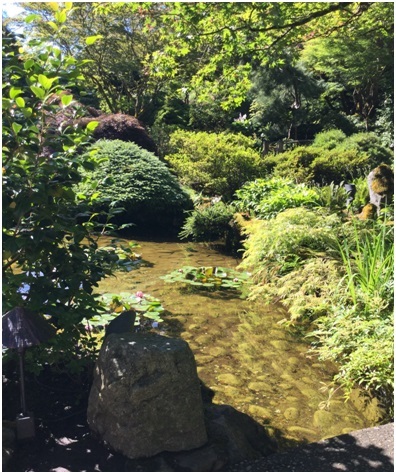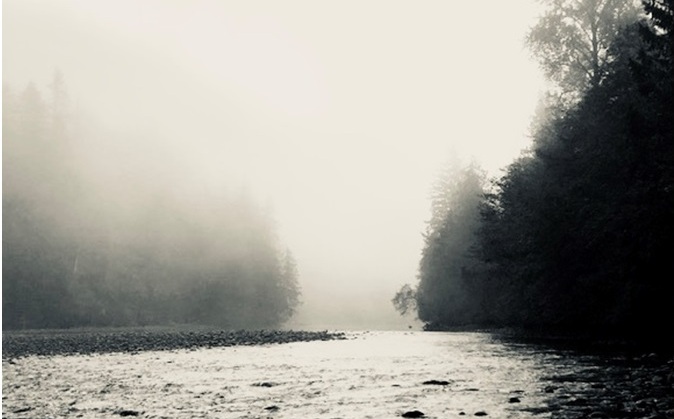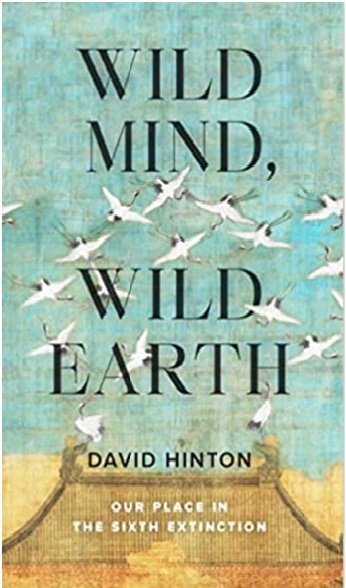Here I am in the 21st century
I have to say it ain’t as cool as I hoped it would be.
Steve Earle
When despair grows in me
and I wake in the night at the least sound
in fear of what my life and my children’s lives may be,
I go and lie down where the wood drake
rests in his beauty on the water, and the great heron feeds.
I come into the peace of wild things
who do not tax their lives with forethought
of grief. I come into the presence of still water.
And I feel above me the day-blind stars
waiting for their light. For a time
I rest in the grace of the world, and am free.
Wendell Berry
We don’t have any time to waste, therefore we need to be patient.
Tupac Enrique Acosta
Pioneer developmental psychologist Erik Erikson authored an influential map of the stages (and the challenges associated with them) of “Human Development.” In this model, every stage presents challenges or tasks. For example, in Adolescence, the task is the attainment of a strong sense of Identity, of one’s “place in the world.” Absent that, one experiences Role Confusion, an absence of clear needs and goals.
Mapping my own body onto this terrain, I find myself on the Stage of Late Adulthood. “This stage begins at age 65 and lasts throughout the rest of your life. If you’re satisfied with your life, you age with grace. You often feel pride in what you’ve accomplished and want to demonstrate your wisdom to others. If you don’t feel a sense of accomplishment when you look back on your life, you may fall into despair. When that happens, you tend to focus more on regrets.” Late Adulthood revolves on the axis of ego integrity and despair.
According to WebMD, despair is akin to depression. In case you are wondering, “Is Depression Curable?” We discover that, “There’s no cure for depression. Your symptoms may go away over time, but the condition won’t. But with care and treatment, you can reach remission and enjoy a long, healthy life.” But are despair and depression equivalent? Are they both indicative of a “mental health problem”, or not?
Erikson is helpful in providing a frame through which the “mental health” discourse can be re-visioned as a cultural wounding rather than as a collection of traumatized and isolated individuals. For each of the stages are intentionally relational in nature. Nowhere is the person presented in isolation from an Other; the model is inherently and imminently social. The related notions of relationship and community seem integral to any possibility of hope in response to the multiple crises in our contemporary life-world.
I have long adhered to T.S. Eliot’s notion that we should “wait without hope for hope would be hope for the wrong thing.” But is it not generally held that “hope” is the very antidote to the sort of despair that I have been circling? These reflections move toward a more nuanced notion of hope, including Roshi Joan Halifax’s “wise hope” (https://www.upaya.org/2021/10/a-strange-and-wonderful-vision-of-hope) and Joanna Macy’s “active hope”.
Active Hope: How to face the mess we’re in without going crazy, by Joanna Macy and Chris Johnstone, has recently been reissued in a revised edition (2021). Rave reviews, describe it as “the essential guidebook for everyone awakening to both the perils and potentials of our planetary moment” (Bill Plotkin) and “a brilliant guide to navigating the relationship between how we imagine ourselves and the world and what we can do in it” (Rebecca Solnit), “guiding readers on a journey of gratitude, grief, interconnection, and ultimately, transformation” (Naomi Klein). I have no wish to disparage such glowing reviews nor the clarity and passion with which the authors grapple with these momentous times. Joanna Macy has long been significant in my own personal “journey”. She has long emphasized opening to pain, trouble and suffering as a foundation for compassionate engagement. That remains a touchstone for me.
The revised edition of this work reiterates the three “stories” that she has described over the years: the Great Unraveling, Business as Usual , and the Great Turning, the latter having entered the lexicon of many in the spiritual wing of the environmental movement. The book traces the spiral of the work that reconnects – the journey from gratitude, knowing our pain, seeing with new eyes, to going forth – replete with exercises and activities that have been developed over decades to enable activists (and others) to maintain hope despite the despair and apathy elicited by the irrevocable news of the great “unraveling.” I applaud them for their work and note particularly the way they highlight the need for a refiguring of our experience of “self”, power, community and time itself.
“Self” is re-imagined as “a flow of being”. Power, re-viewed, is no longer about domination, but is born from emergence and symmetry, replete with the shadowed mystery of possibility. Community comprises the groups we feel at home with, the wider community around us, the global community of humanity, and the “Earth community of life.” And to weaken the bars of our colonial framework, the authors propose an investigation of Deep Time, discovering our connection with the Ancestral past.
The final section of the book is entitled, Going Forth in which we are invited to “catch an inspiring vision”, to ‘dare to believe that it is possible’, and then with external support, inner energy and motivation, we might remain open to “active hope”. We are asked “to rise to the challenge of playing our best role.” This is a great book and it could be inspirational and motivational for many who are troubled in these times. It’s all good, all very well, but still, there’s something a little fishy.
It’s a little bit all about us, the two-leggeds, our “civilization” that needs saving. At times, the larger, relational self disappears into the language of our colonial embodiment, almost showing up as a separate person, struggling to survive.
Something else too. Archetypal psychologist James Hillman notes that our civilization is to a large extent underwritten by the notion of resurrection. We have come to expect Happy Endings. Thresholds are always followed by the Incorporation. The Hero has returned with a Boon to the people. As the book jacket notes, it “equips” us to “play our role in the collective transition, or Great Turning, to a life-sustaining society.” Maybe, but doesn’t a review of history demand some reflection here. This is the 6th extinction after all. Or are we assuming that humans will somehow be able to manage or escape this one?
Here’s the rub, if we are to accept current evidence, a happy ending to all this is unlikely.. I am afraid that I am unable to any longer entertain “hope” of any description, “active”, “wise”, or otherwise. I am so sick of the hucksters of happiness, bone weary of the cheerleaders of “personal growth and development”. (Neither Joanna nor Chris is on either list, by the way!!) But I do find myself drawn more and more fully to Jeffers’s “inhumanism”, aligned with these lines from his Carmel Point: ““We must uncenter our minds from ourselves; We must unhumanize our views a little, and become confident As the rock and ocean that we were made from.”
Instead of “hope”, I find myself searching for the bone-dry whiteness of the season of the North Shield, the honesty and severity of Winter. David Hinton, poet and translator, has written a book that shines like Polaris, as the nights get darker. Wild Mind, Wild Heart: Our place in the sixth extinction, provides me with a vast space (and more) in which Active Hope can dance.
The opening of Hinton’s book invites immediate engagement with the entanglement of our being with the world, challenging from the start our assumption of separation. Our love for this world and the pain we experience when it suffers is a mystery. “Togetherness”, he reminds us, “is a primordial value, deeper and more ancient even than self-awareness, let alone philosophizing. It inheres in the body itself.” Like Joanna Macy, he imagines for us and with us a changed identity, a “magisterial identity, an identity that encompasses all of existence: the ten thousand things of earth and Cosmos looking out through our eyes.”
Basically two themes run through the book: that the theory and practice of Taoism/Ch’an (Zen) Buddhism represents the survival and evolution of Paleolithic wisdom and ethics; and that, the contemporary moment is in many ways parallel to that of the Shang Dynasty of China (1766 – 1040 B.C.E.)
He argues that the Shang Dynasty “was built on a spiritualized monotheistic paradigm hardly different in its fundamental outlines from the Christian West.” In each case, there a breach is created between human consciousness and “nature”. With examples from Chinese poetry (Tu Mu), English (Wordsworth), and American poetry (Robinson Jeffers), along with the work of conservationists Aldo Leopold and Lynn White, Hinton traces the continuity of the Paleolithic, Tao-Ch’an tradition that stands as counterpoint and antidote to the anthropocentric and instrumentalist thrust of Modernity/coloniality.
We are given a vision of “humankind (belonging) to the Cosmos conceived as a living and self-generating tissue. Ch’an meditation opens us to empty- mind, revealing our original-nature prior to the rupture that emerged from Neolithic life-ways and alphabetic writing. And empty-mind’s mirror-deep seeing also returns us to immediate experience prior to that rupture, for it reveals wild earth’s ten thousand things as part of us.”

“The Sixth Extinction is teaching us all about our elemental kinship with the ten thousand things, returning us to our original nature as wild mind and wild heart, to our wild love of this world and the unborn and primordial ethics it engenders. Perhaps this is earth trying to compensate and establish balance. We shall see if it works, or if Jeffers’s devastating storm will continue sweeping over us and other balancing mechanisms come into play, issuing forth who knows what strange and kindred new mysteries wandering boundless and free through the selfless unfolding of things.”
Macy, Joanna & Johnstone, Chris (2012, 2022) Active Hope: How to face the mess we’re in with unexpected resilience and creative power. Novato, Ca.; New World Library
Hinton, David (2022) Wild Mind, Wild Earth: Our place in the sixth extinction. Boulder, Co., Shambhala
Reference 1: https://www.webmd.com/children/what-to-know-eriksons-8-stages-development




